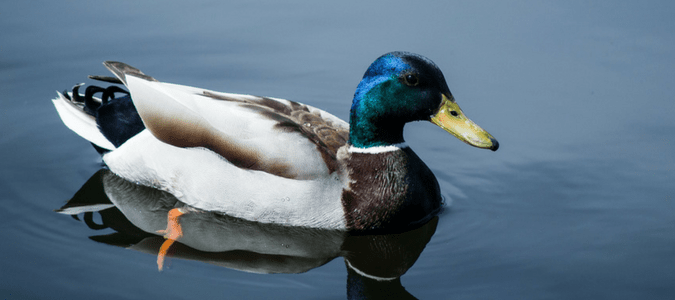 One of life’s simple pleasures is feeding animals. Feeding ducks is a fun outdoor activity for all ages. Before you head out the door with that old loaf of bread, take a few minutes to learn more about what to feed ducks, what types of ducks you’ll commonly see in the southern states and the best places to feed ducks in Austin.
One of life’s simple pleasures is feeding animals. Feeding ducks is a fun outdoor activity for all ages. Before you head out the door with that old loaf of bread, take a few minutes to learn more about what to feed ducks, what types of ducks you’ll commonly see in the southern states and the best places to feed ducks in Austin.
What to Feed Ducks
Most people think stale bread is the perfect treat for ducks in your local pond, but that’s a common misconception. So, even if the bread isn’t stale, can ducks eat bread? The short answer: yes, but it isn’t the ideal food.
Why Isn’t Bread Ideal for Ducks?
Bread isn’t the ideal food for ducks because it has little nutritional value and can cause health problems in ducklings, lead to overcrowding and contaminate the water in which they live. Crackers, chips, donuts, cereal and popcorn are good sources of carbohydrates for ducks, but just like humans, ducks need a balanced diet to be healthy. The most common consequence of a duckling eating too much bread is a condition known as “angel wing”, a deformity resulting in one or both wings sticking out of the body. This condition compromises the bird’s ability to fly.
Too many birds coming to feast on your bread also means too many bird droppings. These unsanitary conditions make for an easy breeding ground for diseases to spread among the animals, both on land and in the water.
Droppings aren’t the only things that can damage the bodies of water that ducks call home. Leftover bread in the water can accumulate and cause hypoxia growth. Hypoxia is a type of algae that sucks the oxygen out of the water, leading to insufficient food supply for birds and other wildlife living in the pond or lake.
An accumulation of bread and other leftovers can also draw rats, mice and insects. The last thing you want to see when you are feeding ducks is one of these pests, which can also carry and transmit diseases to humans and resident wildlife.
So, What Should I Feed Ducks Instead?
The good news is that there are a variety of other foods that are healthy for ducks and the environments they live in. Instead of bread and other products made for humans, try these more healthy alternatives for ducks, geese and swans:
- Corn (canned, frozen or fresh)
- Lettuce or other greens (torn or chopped into small pieces)
- Frozen peas (defrosted)
- Oats (uncooked: rolled or instant)
- Seeds (including birdseed or other varieties)
- Grapes (cut in half or quartered)
- Rice (cooked or uncooked)
What Can I Do With My Stale Bread, Then?
The easiest way to avoid having a lot of stale bread is to keep your bread from going stale in the first place. Keep your bread products in the freezer and just defrost enough for what you need. Keep crackers and other snacks in tightly-sealed containers and only buy and open packages that won’t stay on a shelf for an extended period of time. You can also use extra bread to make croutons, bread pudding or stuffing. Consider adding stale bread to your compost pile, although some homeowners find doing so attracts pests.
What Types of Ducks Live in Texas?
The Lone Star State is home to hundreds of thousands of ducks who spend their winters in Texas after a long migration from the northern states. There are many different species of ducks that can be divided into categories: dabbling (or puddle) ducks, diving ducks and other species.
Dabbling Ducks
Dabbling ducks are surface feeding animals. They eat the water plants and grain crops from the ponds, marshes, lakes and slow rivers they inhabit. The most common species are mallards, gadwalls and the northern shoveler.
Diving Ducks
Diving ducks feed on fish, shellfish and aquatic plants. They live in large lakes, deep rivers, ponds and coastal bays. Diving ducks run or fly low across water for takeoff, and since many have legs closer to the back of their bodies, it’s difficult for them to walk on land. Canvasbacks and redheads are seen in bodies of water throughout Texas.
Other Duck Species Found in Texas
You may also notice a few other types of ducks in Austin, such as the black-bellied whistling duck. These ducks have long necks and bodies.
Where Can I Feed Ducks in Austin?
Austin is full of hike & bike trails, parks and ponds where residents can enjoy the natural beauty of the state’s capital city while checking out the resident waterfowl. Some of our town’s most picturesque spots are also great placed to feed the ducks. Here are our favorite places to feed the ducks around town:
- The trails at Lady Bird Lake (Lou Neff Point in particular)
- Arboretum Duck Pond
- Lindshire Park
- Mueller Lake Park
- The pond by the Central Market North Lamar playscape
- The deck by Mozart’s Coffee Roasters and Hula Hut
- The shore of Lake Austin near Ski Shores Cafe and West Lake Beach
- Woodlands Park in River Place
When feeding the ducks, keep in mind that overfeeding can also harm them. If you notice them becoming uninterested or leaving food floating in the water, it’s a sure sign that the birds are full. Remember to dispose of all trash properly to make sure no litter makes its way into our lakes and ponds since plastic and other packaging materials can also impact other area aquatic and terrestrial plants and animals.
ABC is Here to Help With Your Home So You Can Enjoy Austin
Maintaining your home can often feel like a full-time job. Let the professionals at ABC Home & Commercial Services help you with the things you need to get done so you can spend more time enjoying our beautiful city.
